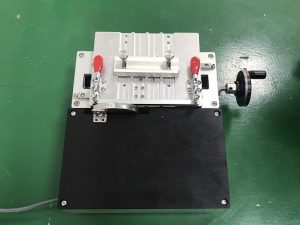Mastering Chamfering Techniques on CNC Machines: Precision and Versatility
Chamfering, a process of beveling or rounding off the sharp edges of a workpiece, is a critical step in manufacturing across various industries. Whether you’re crafting intricate metal components or sculpting precise wooden structures, chamfering enhances both aesthetics and functionality. With the advent of CNC machining, chamfering has reached new heights of precision and efficiency.
Understanding Chamfering on CNC
Chamfering on CNC machines involves utilizing computer-controlled cutting tools to create precise beveled edges on a workpiece. This process offers several advantages over traditional methods:
- Precision: CNC machines operate with exceptional accuracy, allowing for consistent and uniform chamfers on every piece. This level of precision is particularly crucial in industries where even minor deviations can impact product quality.
- Efficiency: CNC chamfering reduces manual labor and minimizes the risk of human error. Once programmed, the machine can execute chamfering tasks swiftly and continuously, enhancing productivity and reducing production time.
- Versatility: CNC machines support a wide range of materials, from metals like aluminum and steel to plastics and composites. This versatility enables manufacturers to chamfer various workpieces without the need for specialized equipment.
Techniques for CNC Chamfering
Several techniques are commonly employed for chamfering on CNC machines:
End Mill Chamfering
This technique involves using an end mill or chamfer mill to cut beveled edges at precise angles. CNC programming allows operators to specify the desired chamfer dimensions, including angle, depth, and width, ensuring consistent results.
Ball Nose Chamfering
Ball nose end mills are used to create rounded chamfers, which are often preferred for aesthetic purposes or to reduce stress concentrations in the workpiece. CNC machines can execute complex ball nose chamfers with ease, making them ideal for intricate designs.
V-Carving
V-carving is a versatile chamfering technique that involves cutting V-shaped grooves along the edges of a workpiece. CNC routers equipped with V-bit tools can achieve sharp or shallow chamfers, depending on the desired effect.
Laser Chamfering
In addition to traditional cutting tools, some CNC machines offer laser chamfering capabilities. Laser beams are used to melt or vaporize material along the edges, creating smooth and precise chamfers without direct contact.

Applications of CNC Chamfering
The applications of CNC chamfering are diverse and encompass various industries:
- Aerospace: Chamfering is essential in aerospace manufacturing for components like turbine blades, where precise edge finishing is critical for aerodynamic performance and structural integrity.
- Automotive: CNC chamfering is widely used in automotive production for creating smooth edges on engine components, transmission parts, and chassis elements, improving both functionality and aesthetics.
- Electronics: In electronics manufacturing, chamfering ensures proper fit and alignment of circuit boards, connectors, and enclosures, enhancing product reliability and durability.
Chamfering on CNC represents a marriage of precision engineering and advanced automation, offering unparalleled control and efficiency in edge finishing processes. Whether in aerospace, automotive, electronics, or woodworking, the versatility and accuracy of CNC machines have revolutionized chamfering techniques, enabling manufacturers to produce high-quality components with ease. As technology continues to evolve, CNC chamfering will undoubtedly remain a cornerstone of modern manufacturing, driving innovation and excellence in diverse industries.

















